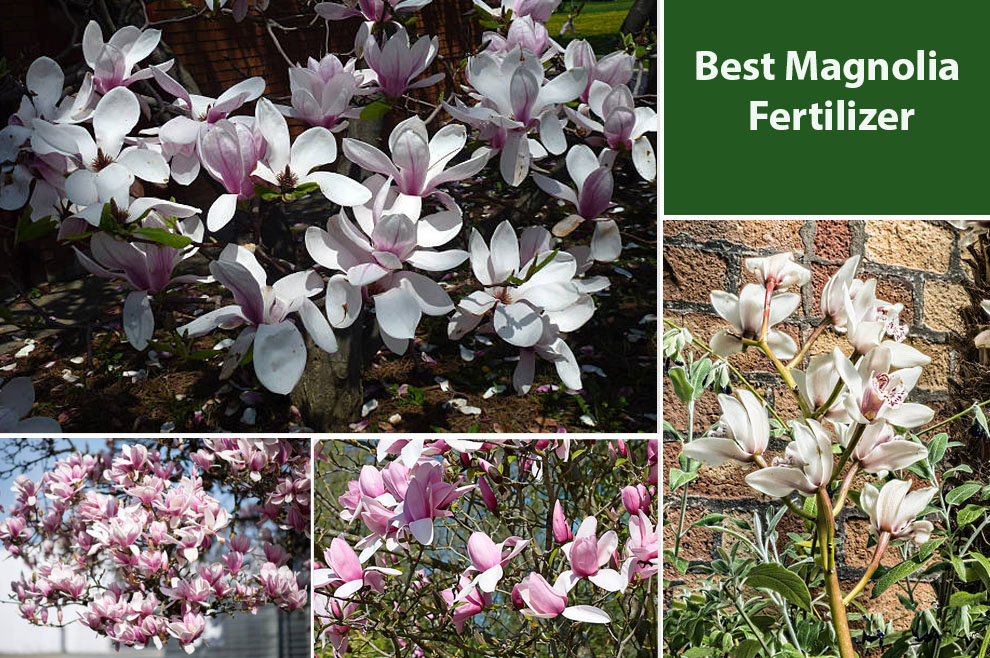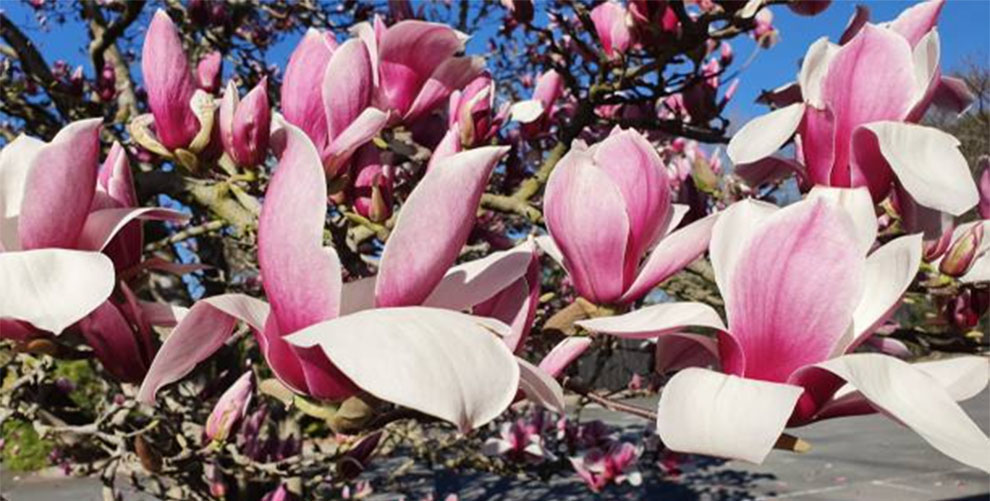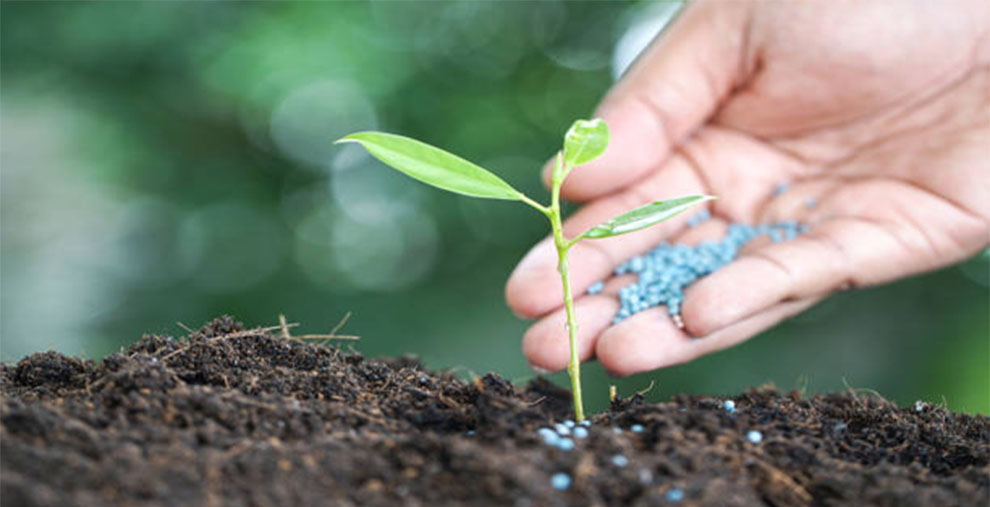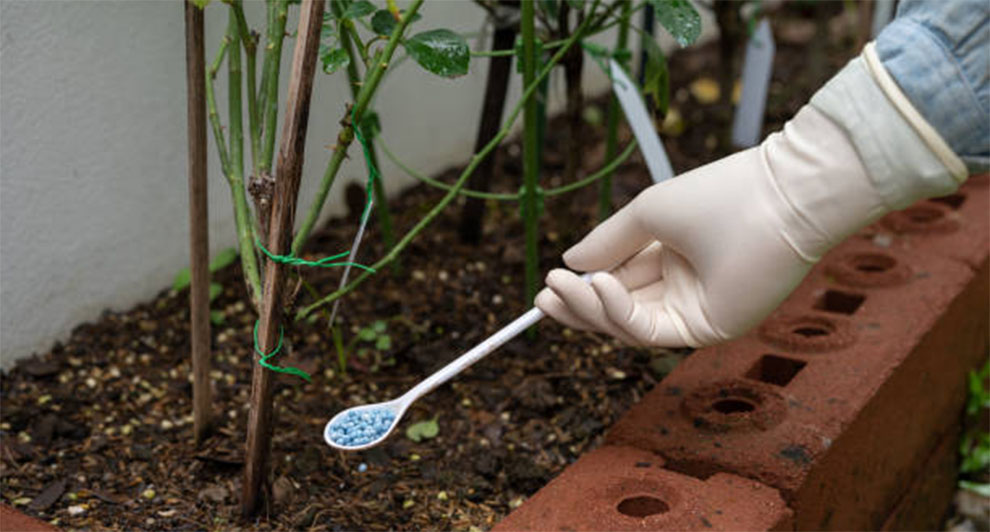Feeding Magnolia Trees: Best Fertilizers & Plant Food for Magnolias
Magnolia trees love nitrogen rich fertilizers. Just avoid using them in winters at all costs.

Magnolia trees have been on this planet for a very long time. Belonging to the Magnoliaceae family, there are hundreds of Magnolia species, but only a few grow in residential spaces.
At some point, Magnolia trees will require fertilizer to replenish the nutrients in the soil. It helps the plant maintain its fragrant, multi-hued flowers and lush green foliage. We will talk about some of the best fertilizers for magnolia trees in the coming sections.
Correct fertilizer is necessary for Magnolia tree care, but while fertilizing, please be cautious because improper fertilization might damage the roots.
The Magnolia trees thrive when they receive fertilizers with good nitrogen content. Hence, we recommend opting for fertilizers with an NPK 12-4-8 or 20-5-10 ratio. That said, the best plant food for magnolias in the long run is an all-purpose organic fertilizer.
You can ensure that your Magnolia remains well-fed with all the essential nutrients needed to overcome harsh conditions and grow well with a quality fertilizer. Moreover, fertilizers can also be beneficial if your plant is undergoing a pest infestation.
Best Fertilizers For Magnolia Trees
- Top Granular Pick – BioAdvanced 12 Month Tree and Shrub Protect and Feed
- Ideal for Slow Release – Scotts Evergreen, Flowering Tree & Shrub Continuous Release Plant Food
- Best Spikes – Jobe’s 01310 Fertilizer Spikes, Tree and Shrub
- All-in-one Microbe Feed – Shake ‘N Feed Flowering Trees and Shrubs Plant Food
Buying Guide – Choosing The Right Fertilizer for Magnolia Trees

We will tell you in detail about each of these fertilizers mentioned above. Before that, let us give you some quick background information for the correct fertilizer selection.
a. Perform a soil assessment
Your fertilizer must cater to the plant’s specific nutrient requirements to ensure that they have pretty colorful blossoms. It should also encourage branching.
Fortunately, or unfortunately, Magnolias do not need heavy fertilizers. But, adding fertilizers rich in nitrogen can do wonders to the plant.
Typically, Magnolias grow best in USDA hardiness zones seven through nine and tend to absorb potassium (K) and Phosphorous (P) before Nitrogen (N) in spring. Hence, some Magnolia species bloom before the foliage appears.
Once that happens, the plant needs Nitrogen for leaf growth, branching, trunks, and a healthy root system. A slow-releasing fertilizer works best to meet the plant’s fertilizing requirement. It will offer the Magnolias a steady nutrient flow.
So, even though Nitrogen is an essential prerequisite, Magnolias also need other macronutrients. It depends on how fertile the soil is. If it is not as fertile, the fertilization requirement will be high.
So, perform a soil examination to offer the plant the fertilizer that makes up for the deficiencies. But, if the soil is fertile, a balanced feed NPK 10-10-10 works best.
Soil assessment is also helpful because:
- You understand the needed NPK ratio
- You get to know the soil pH
b. Choosing between granular vs. liquid fertilizer
Most people opt for the slow-releasing, granular fertilizers over the liquid ones as they break down gradually as per the moisture in the air and temperature of the soil. Hence, providing the soil with a consistent flow of nutrients across the growing season.
You may want to opt for liquid fertilizer that gives fast results if you reside in areas with a narrow bloom period. However, the big liquid nutrient dosage can induce irreparable damage to the trees.
But liquid fertilizers have their share of benefits. If your Magnolia is planted in less-than-fertile soil, these are the best feed for magnolia trees as they offer the plant the necessary nutrients required to thrive.
1. Concentrate vs. Spray
You can find liquid fertilizer in pre-mixed, water-soluble, or concentrated forms. These take the nutrients straightaway to the roots and offer quick relief for problems such as yellowing of leaves. Fertilizers in liquid form are also relatively inexpensive, but they might not work as well as the slow-release fertilizers
2. Granules
Granule fertilizers are easy-to-use and offer consistent nutrition for up to nine months. The biggest pro is they gradually pass on nourishment to the roots.
3. Spikes
Fertilizer spikes are convenient, especially for those with potted plants, as they are pre-measured and come in various sizes. You can push them into the loamy soil with minimum burning risk.
c. Decision between synthetic vs. organic fertilizers
Lastly, the choice between synthetically or organically feeding magnolia trees is also crucial. It depends on your preference and the kind of results you seek. But understanding how these fertilizer works and their environmental impact can help you make the right choice.
As is evident, organic fertilizers are animal or plant-based and help boost soil fertility. They encourage proper drainage and aeration and keep the plants fed for longer.
On the contrary, the synthetic fertilizer are produced in large quantities comprising of chemical compounds and minerals. They boost the branch and trigger bud growth by offering higher nutrients than the plants usually have access to. However, they do not help in long-term soil fertility.
Best Fertilizers For Magnolia Trees – 4 Top Picks
Here is a list of four of the top Magnolia food options that will give it a long and healthy life:
1. BioAdvanced 12 Month Tree and Shrub Protect and Feed, Granules
 |
Check price on Amazon |
BioAdvanced has a twelve-month dual-action formula that helps guard your Magnolia trees against common pests while providing the required nutrients and preventing new infestations simultaneously.
Regardless of where you have planted the Magnolias, you can apply it, and it will keep Emerald Ash Borers, Japanese Beetles, Aphids, Leafminers, and Adelgids at bay. They are available in ready-to-use granule form.
So, you can easily use them for feeding magnolia trees by simply sprinkling the fertilizer around the base or mixing it with soil or mulch during the watering season. It is a slow-releasing fertilizer.
2. Scotts Evergreen, Flowering Tree & Shrub Continuous Release Plant Food
 |
Check price on Amazon |
It is one of the best continuous-release fertilizers for Magnolias, Dogwoods, hydrangeas, and several other acid-loving shrubs and trees like rhododendrons, camellias, and azaleas.
It is available in NPK 11:7:7. So, its higher potassium and phosphorous ratio amplify the blooms on your dwarf trees and shrubs. Further, it stimulates vigorous root growth and ensures lush foliage production.
Its concentrated formula ensures that Magnolia receives all the nutrients and minerals for up to two months. It has a simple application process, and the formulation is light, so you will not experience any plant burning.
But, use only the recommended dosage for your plant’s size. You can use it during the growing season or at the start of the spring. It is not the most suitable for potted shrubs and trees.
Check price on Amazon
3. Jobe’s 01310 Fertilizer Spikes, Tree and Shrub
 |
Check price on Amazon |
If you seek spikes for feeding magnolia trees, this one from Jobe’s is the ideal pick. It works for all kinds of deciduous shrubs and trees, from hibiscus to honeysuckle, dogwood, and more.
It is a slow-release fertilizer, implying that the spikes release only a small degree of nutrients to the plants over time to keep them healthy and happy around the season. It can be an easy-to-use and insert pick, regardless of whether you are starting your gardening journey or are a pro in the field.
Because the spikes directly go to the plant’s roots, there would be no mess, hazards, or runoffs. Every spike provides your plant with the right degree of nutrients. You can find this plant feed in different quantities, including the five, nine, or 160 counts.
4. Shake ‘N Feed Flowering Trees and Shrubs Plant Food
 |
Check price on Amazon |
This magnolia tree fertilizer contains all the natural ingredients to feed microbes in the soil. You can use it on all the acid-loving, flowering shrubs and trees because it helps maintain lush green, deep foliage, and colorful blooms around the season.
Using this fertilizer, you can give your plants a good start and ensure that it receives continuous feed for up to three months for beautiful shrubs and trees. You can use this for plants in containers and grounds.
Related: Magnolia tree lifespan | Magnolia tree growth rate |Pruning magnolia
What Is The Best Time To Fertilize Magnolia Trees?
Since the Magnolias wake from winter dormancy, they experience rapid growth in spring, yielding flowers before the leafage. Once the flowers drop, the foliage shows. Following this, the growth slows down a bit. So, to get the maximum benefit from the fertilizer, apply it before or just as the new buds show.
If feeding magnolia trees is needed a second time, you can reapply fertilizer no later than mid-July. Slow-releasing fertilizers take time to stimulate new growth and are susceptible to damage by an early frost, leaving the tree vulnerable.
So, if your plant experiences summer drought stress, do not fertilize for the second time. Roots exposed to less water are susceptible to burns or shift to a survival mode. Soil condition is another factor for fertilizing.
For Magnolia planted in sandy soil, splitting the application is beneficial – Once in early spring and then in late spring.
How To Fertilize Magnolia Trees?

Magnolias do best with progressive fertilizing. They are not heavy feeders. As a result, you can use a slow-release fertilizer to provide older trees with a constant stream of nutrients.
A faster-acting liquid fertilizer will be more beneficial for saplings that require more frequent feeding because it will start off their maturation process with rapid growth.
Overfertilizing, however, can cause forced growth that weakens the plant’s branches and leaves it vulnerable to insect, disease, and frost damage. It can even kill the magnolia. Magnolia trees, in general, develop in color and shape more healthily when allowed to grow naturally.
Fertilizers with a high nitrogen percentage and a decent chunk of potassium and phosphorous will foster attractive foliage, vibrant booms, and robust plant structure. But, every fertilizer brand will have different label instructions.
But, if you use granules, the advised application rate is 1/10 lb for every inch of the tree trunk. You can apply it before the predicted rainfall to amplify growth. If using a liquid fertilizer, apply it with a hose attachment or a watering can during cooling hours to avoid scorching.
Do Magnolia Like Organic Fertilizers?
Even though organic fertilizers do not work instantly, they are more sustainable choices for Magnolias. One of the best organic fertilizers for plants is Down to Earth Organic Fertilizer.
Do You Need To Fertilize Magnolia At The Time Of Plantation?

Yes, fertilizing the magnolia at the time of planting helps. However, fertilizing is only a part of the process. It is equally essential to prep the soil well for the magnolia seedling, as the plant needs the correct pH to absorb the nutrients. Here are a few things you can do:
- Select a location where magnolia can receive full sun to part shade, and the soil stays moist but not soggy and is well-draining.
- Assess the soil’s pH, ensuring it is acidic and between 5.0 and 6.0. If the pH is over 6, it will get challenging for the plant to absorb the nutrients.
- Modify the pH to its proper range by adding soil amendments. If it is too alkaline, you can add sphagnum peat moss. If the pH is low, you can add limestone to the soil.
- Add two pounds of a 10-10-10 (or similar formula) of granular fertilizer for every 100 square feet of planting soil.
- Mix the compost, chosen soil amendments, or well-rotted manure into the removed soil. Use approximately 1 part mature or compost to one part of the existing soil.
- Plant the seedling in the hole and backfill it around the roots with the modified soil.
- Avoid using magnolia tree fertilizer during the first year of your plant’s growth.
Frequently Asked Questions
Ques 1. Is Epsom salt good for Magnolia trees?
Ans. Epsom Salt is Magnesium Sulfate. The oxygen, sulfur, and magnesium in these salts can help if the soil’s pH is too low or too high. Magnesium sulfate amplifies nutrient absorption. Unlike similar compounds, Epsom salts do not accumulate over time. You can use them in both water-diluted or dry forms.
Ques 2. Can I put coffee grounds on my Magnolia?
Ans. Coffee grounds are acidic in nature and hence, Magnolia trees love them. You can use coffee grounds with eggshells, mix it with compost or add it to the mulch.
Coffee grounds contain amino acids and vitamins that help Magnolia trees & bushes develop a rich soil and solid root system. They are also a rich nitrogen source.
